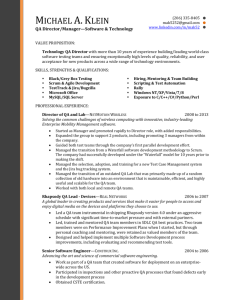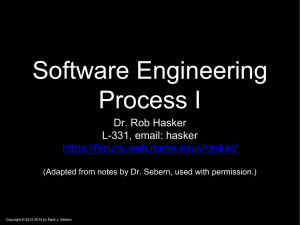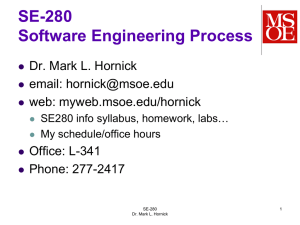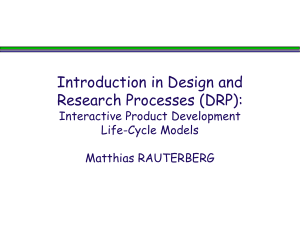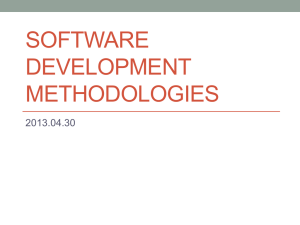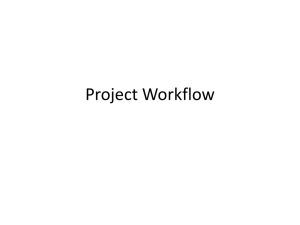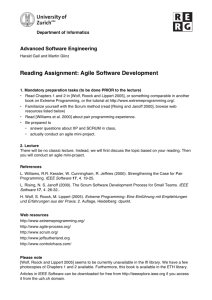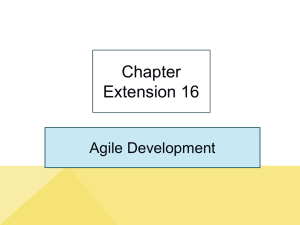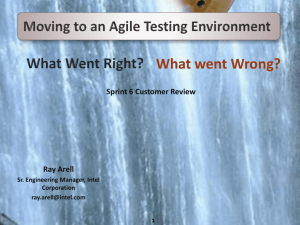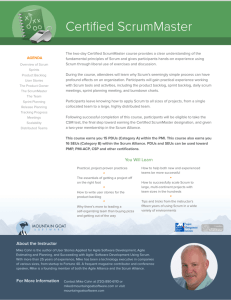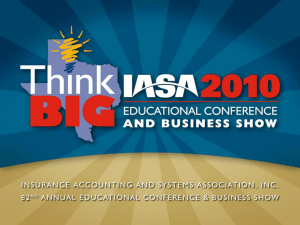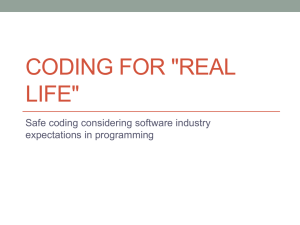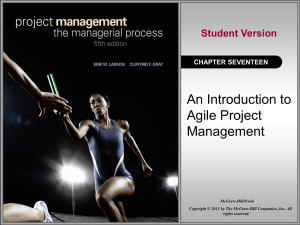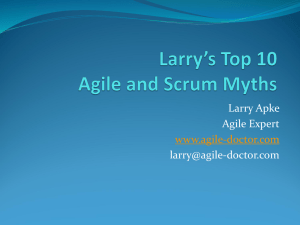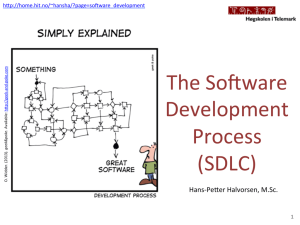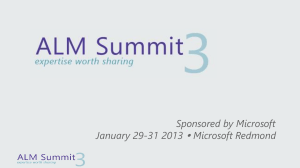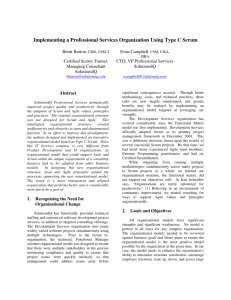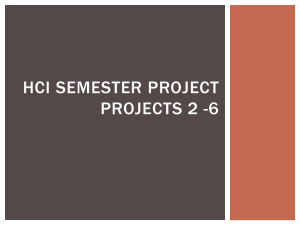SE-280 Lecture
advertisement
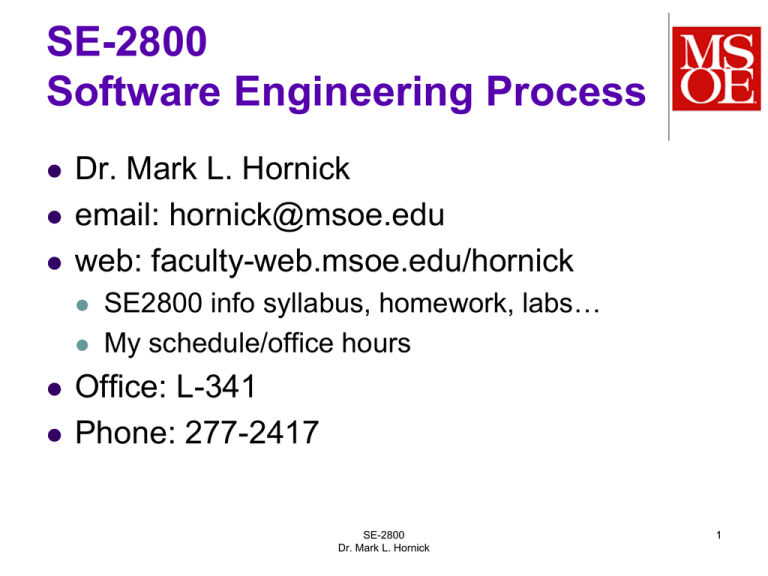
SE-2800 Software Engineering Process Dr. Mark L. Hornick email: hornick@msoe.edu web: faculty-web.msoe.edu/hornick SE2800 info syllabus, homework, labs… My schedule/office hours Office: L-341 Phone: 277-2417 SE-2800 Dr. Mark L. Hornick 1 Logistics • • • • • Class roster, attendance policy Book, schedule, policies, grading Course web site Atlassian Jira accounts CATME surveys SE2030 Review: Software Life Cycle Requirements Analysis Plan – left for SE2800 High-level Design Low-level (Detail) Design Implementation Unit Test Integration System Test Deploy Maintain 3 Curriculum Context SE 2832 Verification SE1011, 1021 CS2852 programming skills SE 2030 Tools/Practices SE 2800 SE Process I SE 3821 Requirements SE 3800 SE Process II Software Development Lab Process Goals Overwhelmingly, [software development] managers and stakeholders ask us for two things: Predictability Quality vs SE-280 Dr. Mark L. Hornick 6 Practice vs Process Practice = “what we do” Process = “how we do it” “how we measure what we do” “how we improve what we do” Process questions • • How should we plan and execute a project of moderate size (GPS for a small team)? How would you do it? • What is your current software process? • • What was your SE-2030 experience? What is good/bad about it? Practice and Process Activities • • • • • • • Activity planning Requirements analysis & specification Architecture & highlevel design (HLD) HDL review Detailed design Detailed design review Implementation (coding) • • • • • • • • • Code review/inspection Unit testing Integration testing System testing Size estimation Time tracking Defect tracking Quality analysis Productivity analysis There are many different ways to break down software development activities; this is just one way of doing it. Practice vs Process Practice = “what we do” Analyze requirements, create architectural/detail designs, implement, test Process = “how we do it” Plan, organize, measure, make/meet commitments, ensure quality, control, improve, adapt Process models provide frameworks for organizing software development activities One pass, sequential (“waterfall”) Iterative/incremental “Agile”: XP, Scrum PSP/TSP “Spiral” Waterfall vs. Incremental SE-280 Dr. Mark L. Hornick 12 Comparing Process Models Waterfall Planning model Upfront, track and adjust Quality management Explicit focus on defects after release Final product definition Schedule target, defined Incremental (Scrum/others) Iterative, team experience, integrated customer Short cycles to provide monitoring, make improvements Flexible, adaptive Course Goal • • Experience with one approach to software process Why Scrum/Iterative? • • Gaining acceptance in industry Well-suited for a lot of SW projects In SE-2800, SDL, and Sr Design, you will learn/use an incremental process model based on Scrum • Atlassian • JIRA/Agile Tools • JUnit • Test (plan/track) automation • Confluence • Jenkins • Continuous (wiki) • Bitbucket • Git repository build Tool Setup • First lab session • You have/will receive an email with an invitation to Atlassian OnDemand • Set up your account before lab • You MUST use your MSOE email and username! Review • SE 2800: Software Process I • • • • Introduction to software process Practice vs. process • Practices: what needs to be done • Process: how & when Process models • Sequential vs. iterative • Predictive vs. agile Scrum: Read Ch. 2 – quiz at start of lab Textbook • Essential Scrum • A Practical Guide to the Most Popular Agile Process, Kenneth S. Rubin • • Good reference on process framework – not a real textbook Needs supplement on practices

